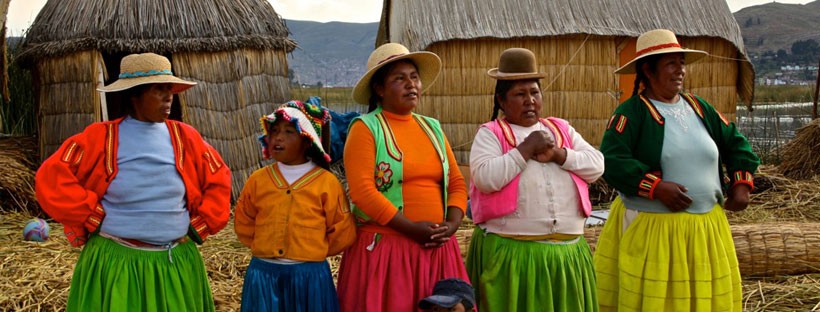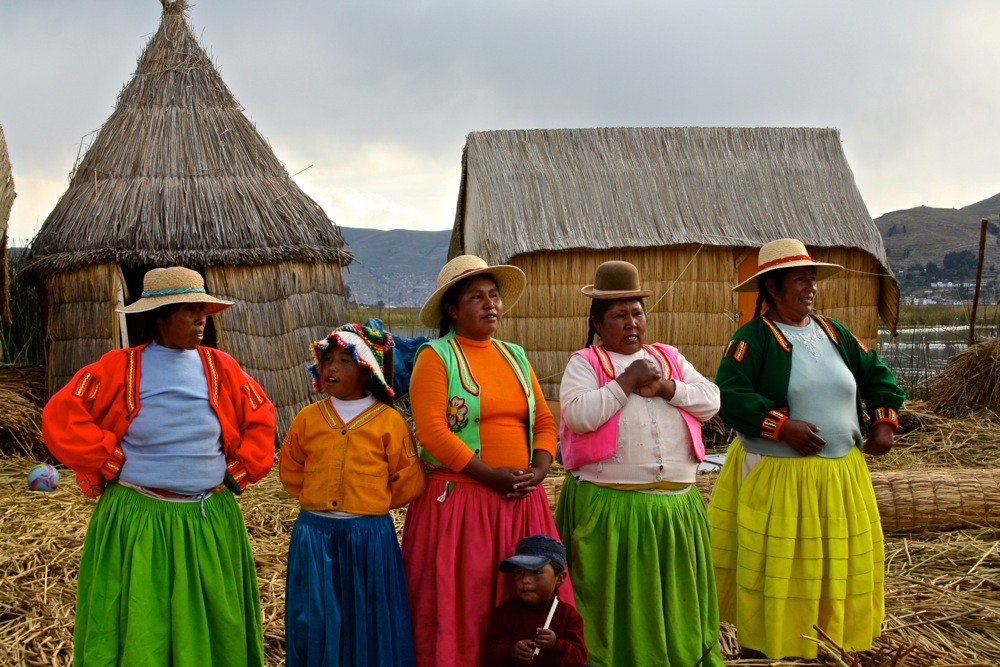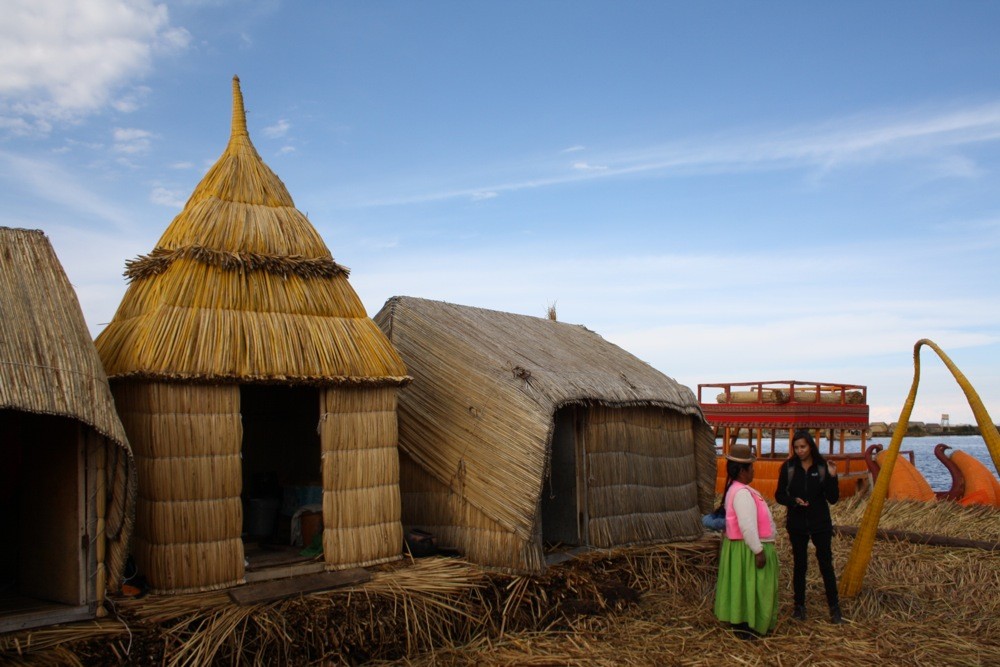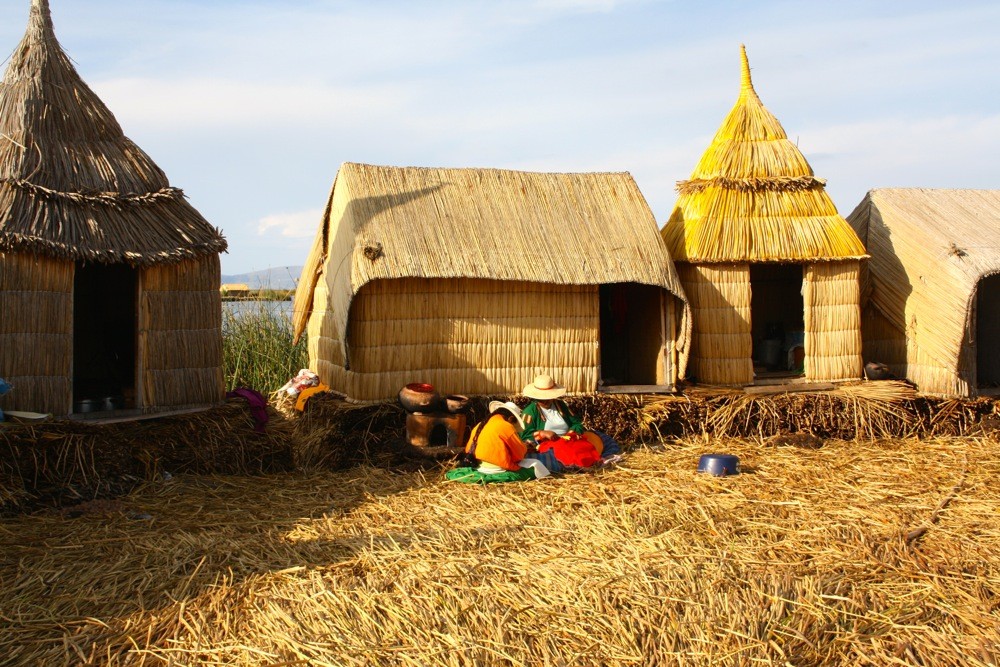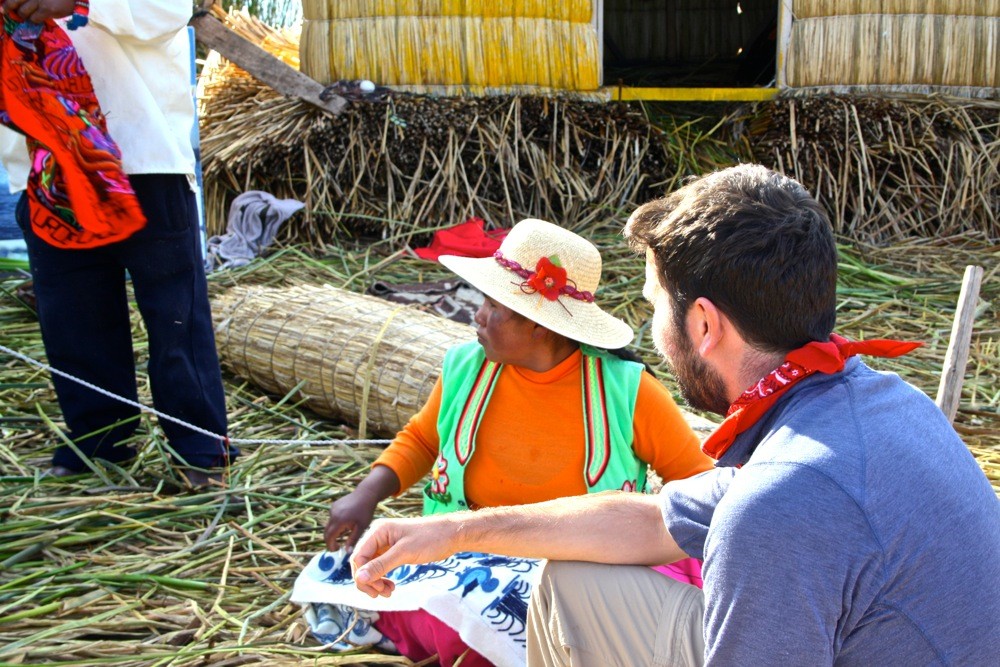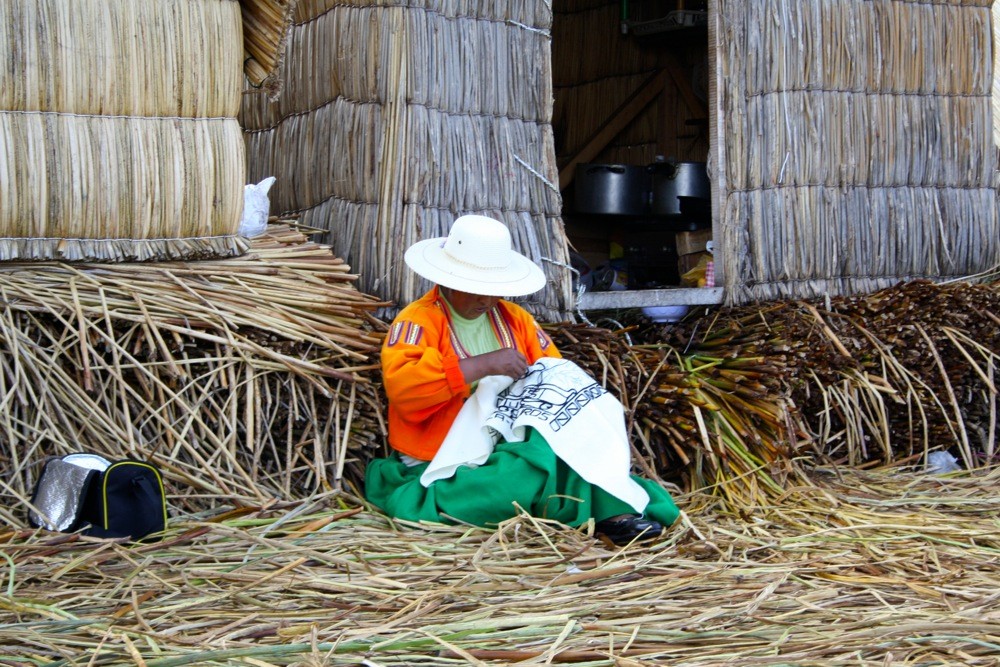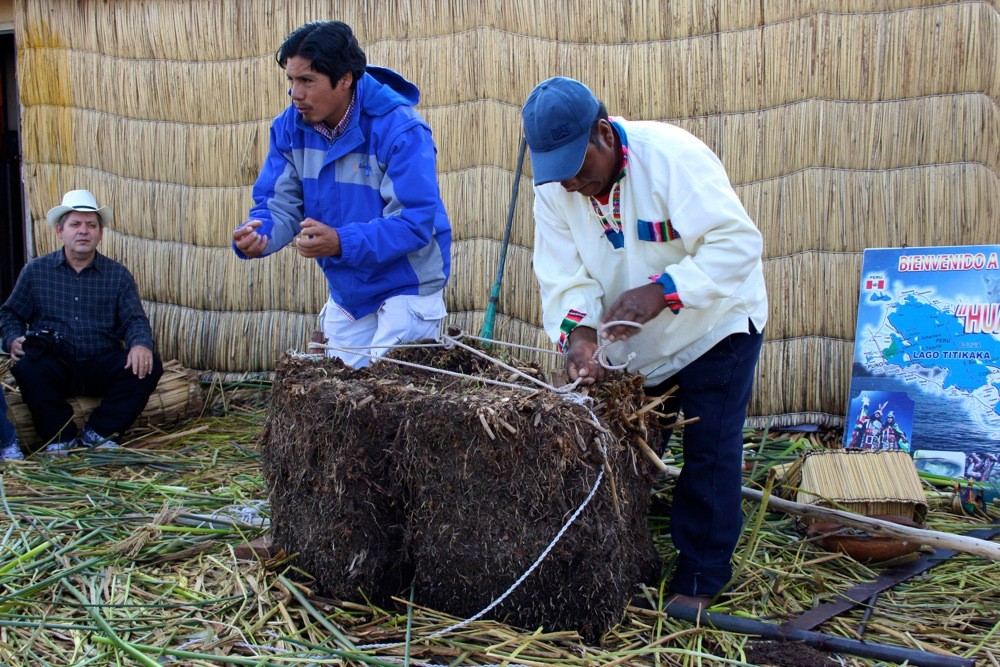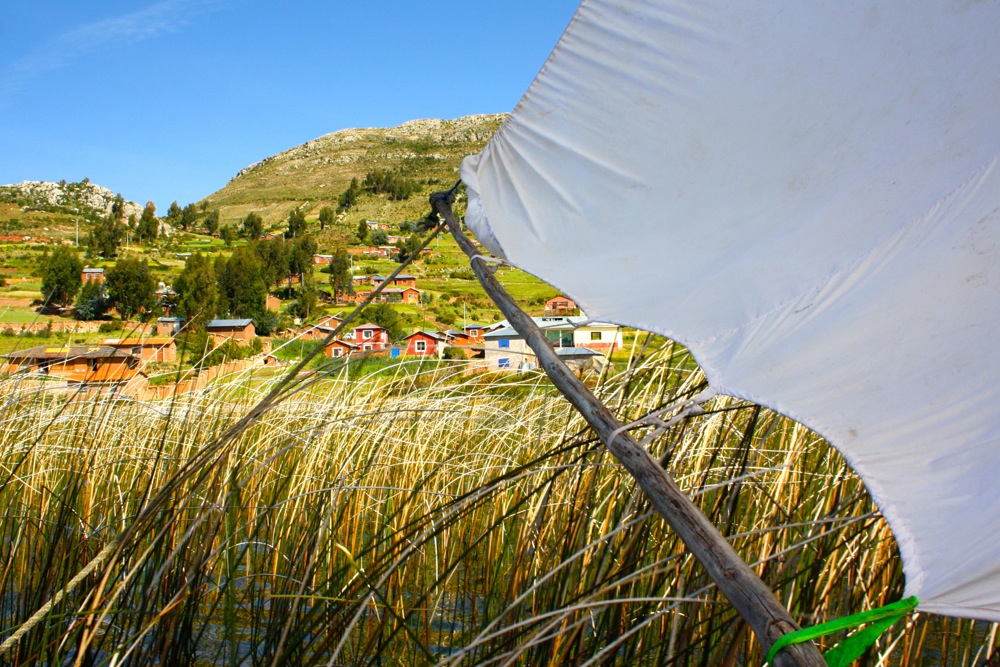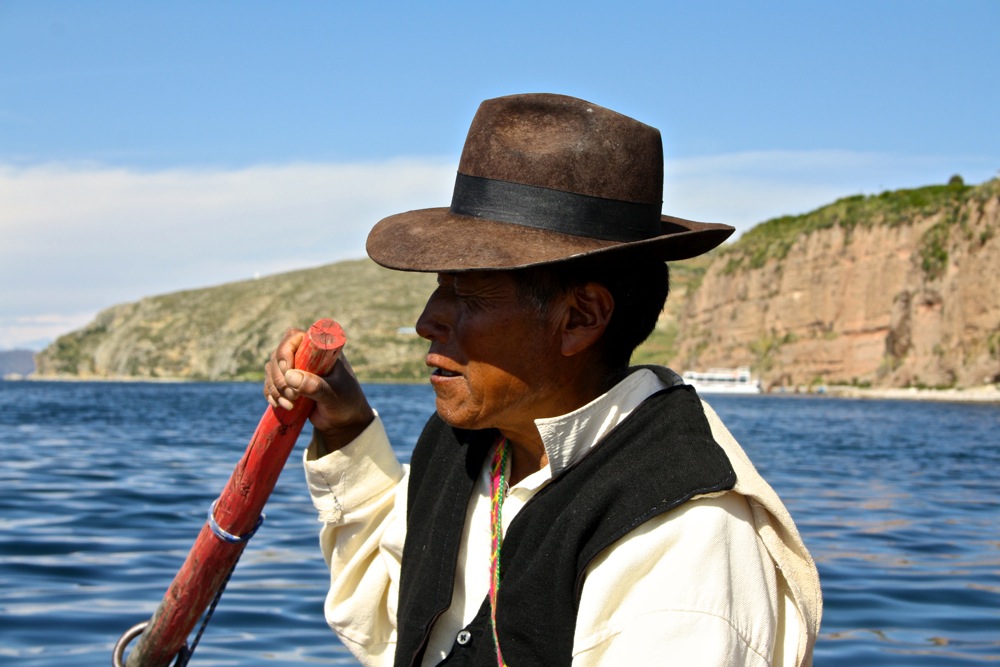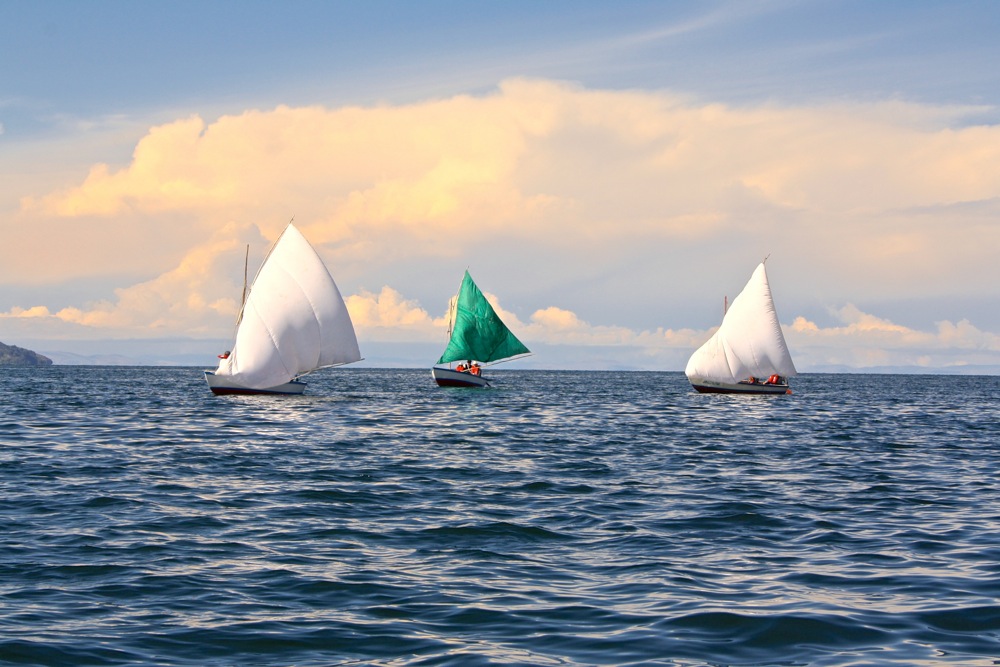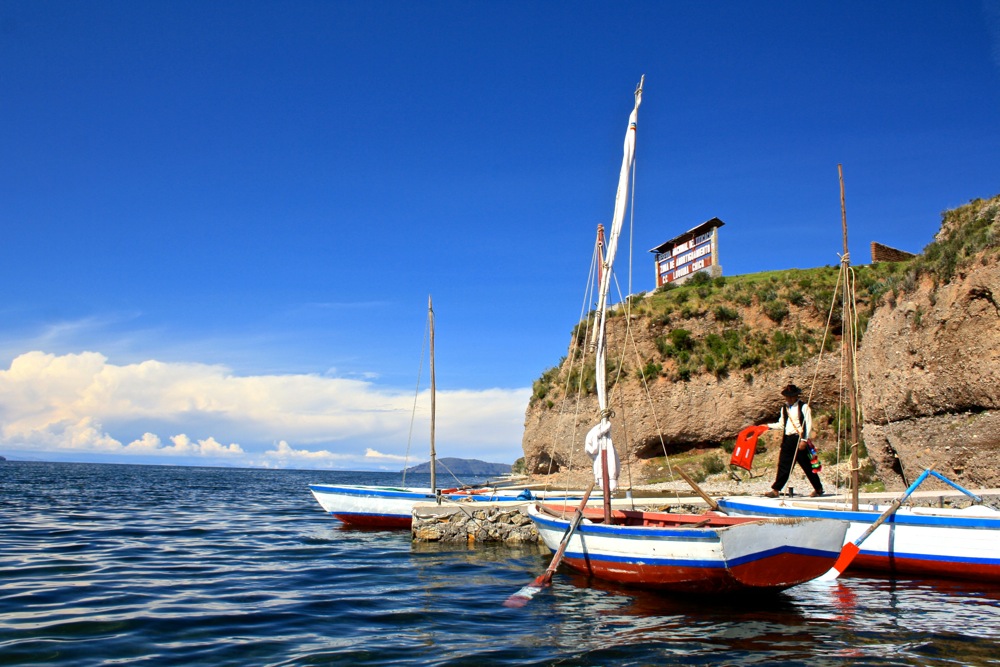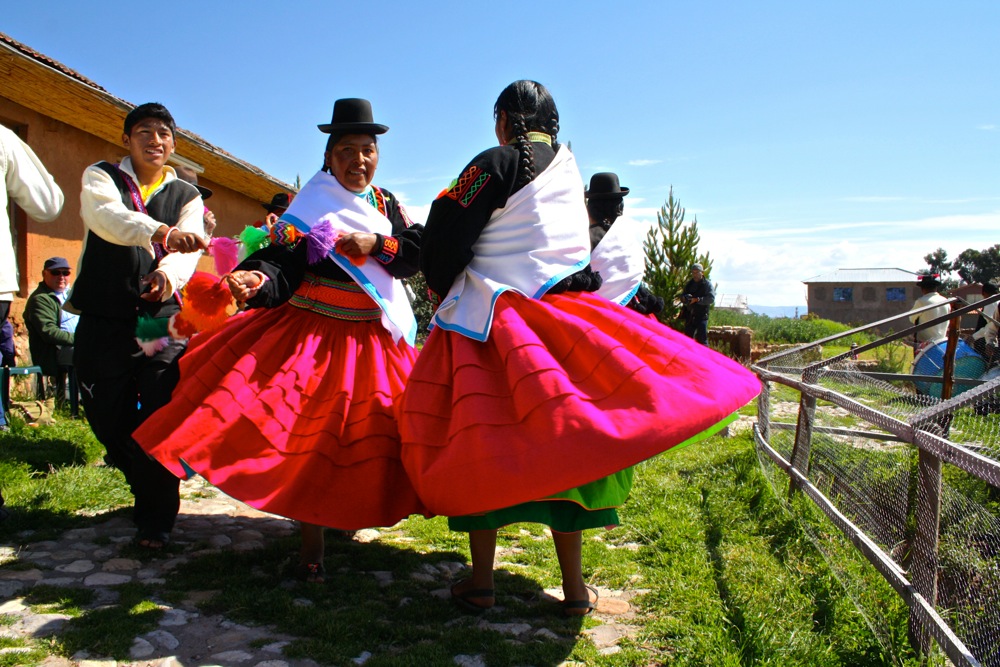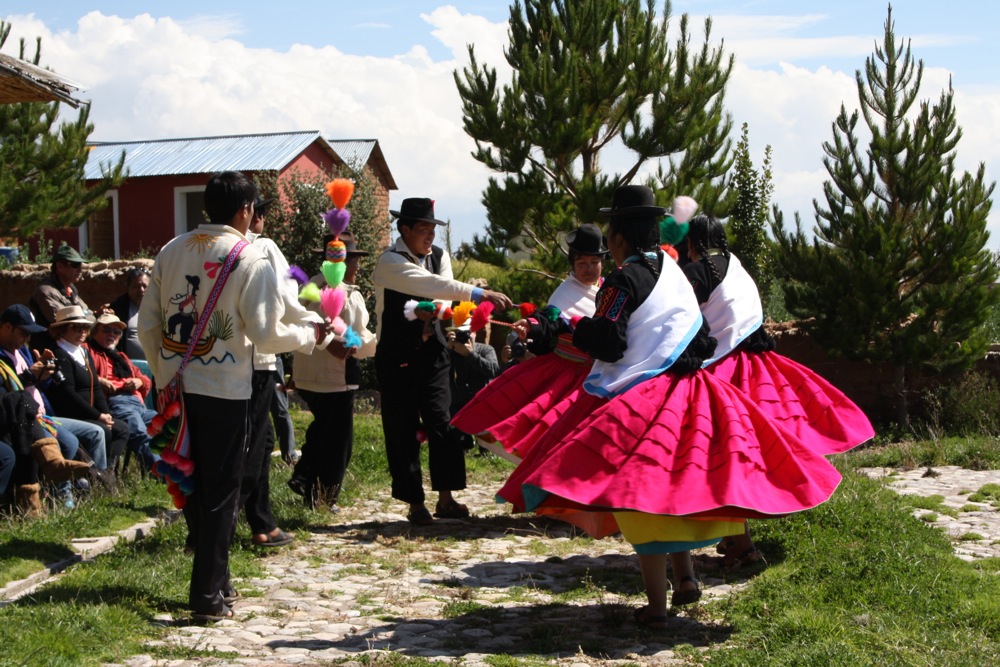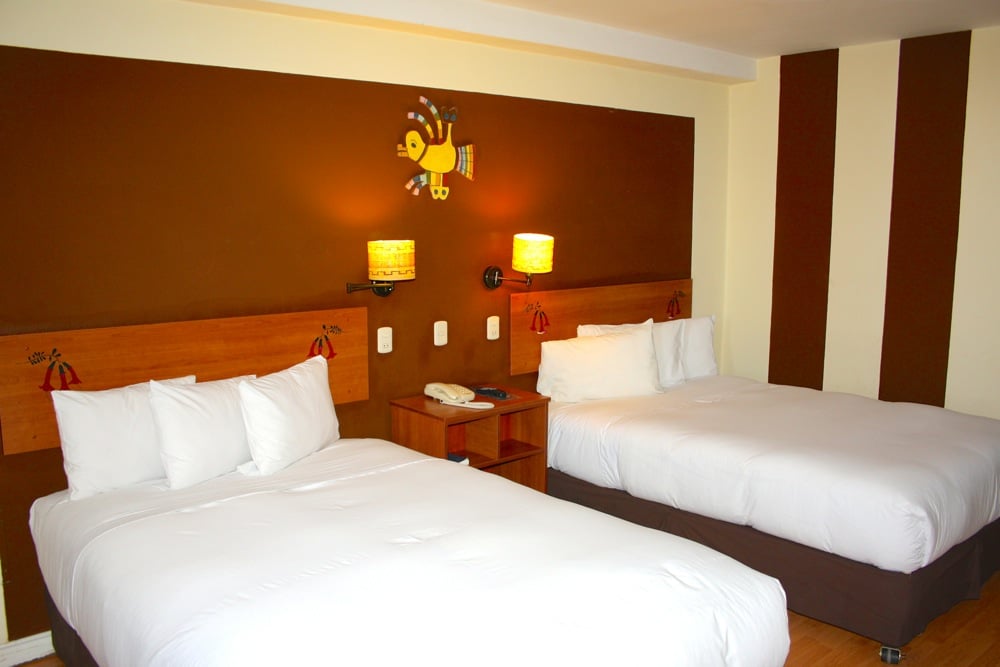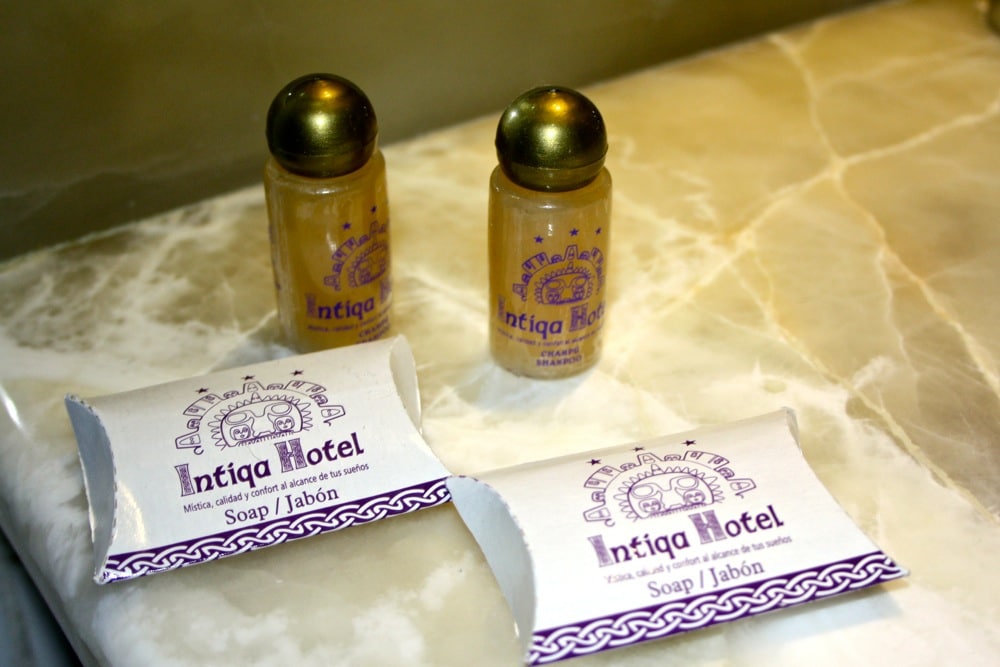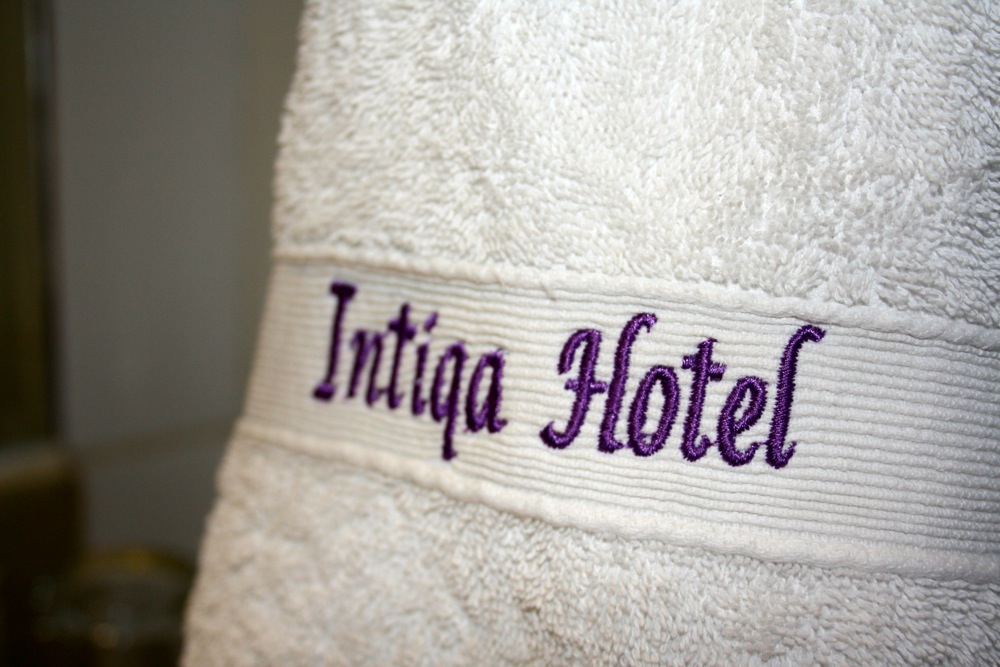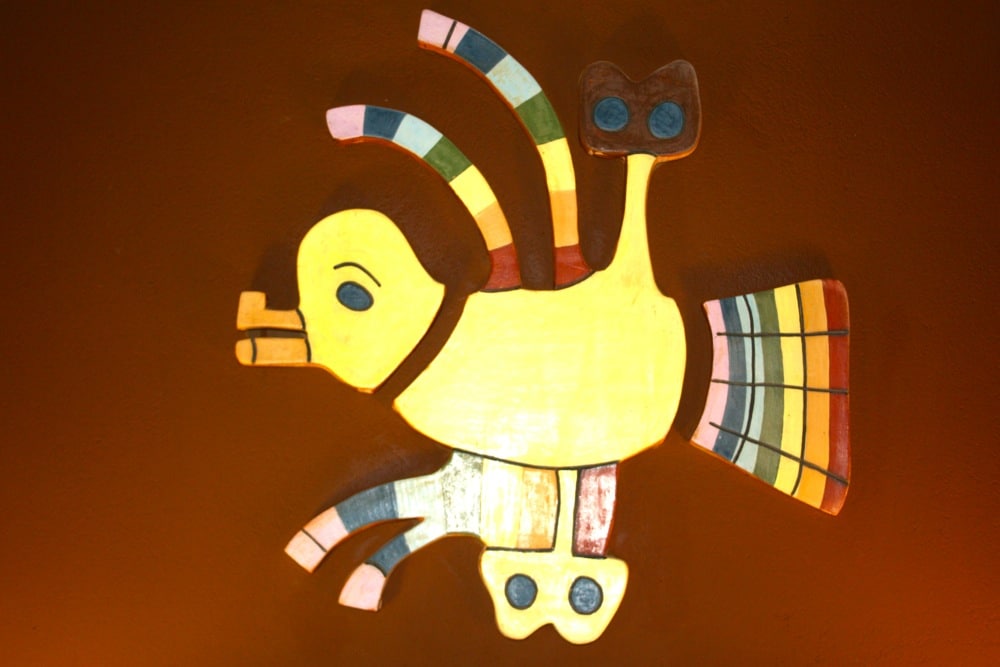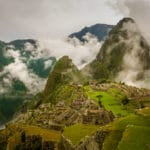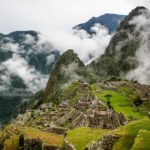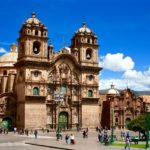When we set out for this trip nearly a year ago, I knew that there would be certain places, certain experiences that would leave me awestruck. I knew I’d be wowed by Machu Picchu, stand in awe of Easter Island’s giant statues and gaze open-mouthed at Perito Moreno in Argentina. What I didn’t expect is that I’d be similarly lost for words on the man-made Uros floating islands of Lake Titicaca. In fact, I hadn’t even heard of them before arriving in Peru.
I guess that’s one of the wonders of travel: discovery. The floating islands of Uros are certainly one of the most charming discoveries of our trip so far. Here’s why.
The Uru people, or Uros, live on over 40 self-constructed floating islands on Lake Titicaca in Peru. The lake sits at 3,810 meters above sea level about five kilometers from the nearest mainland town, Puno. The islands are made almost entirely from dried totora reeds which grow naturally and abundantly in the lake.
The Uros took to the water over a thousand years ago as a means of defense against the aggressive nearby Inca and Colla cultures. The islands take months to build and need continual maintenance, yet they can be moved at a drop of a sombrero if under threat.
We booked onto a day tour through Amaru Tours, located in the lobby of Intiqa Hotel where we were staying. The tour started with a visit to Taquile Island for a taste of local culture, followed by a traditional lunch on Chucuito Peninsula. Both stops are beautiful but it’s the floating islands that are most impressive.
Atlas & BOots
Stepping off our motorboat onto the springy reed islands was disconcerting at first. I could tell I wasn’t on a boat anymore, yet not exactly on dry land either. We sat in a circle on a small bench built from reed while two islanders explained how the islands were built and maintained. The totora reed is at the centre of the Uros culture and is used for constructing the islands as well as the buildings, boats and many of the crafts they sell throughout the islands. Even much of the islanders’ diet and medicine revolves around the reed with the root being used for making iodine, treating wounds and making a reed flower tea widely consumed on the islands.
After the demonstration we had plenty of time to explore the island and meet the three families living there. The floating islands can accommodate from two to 10 families depending on their size. They keep rabbits, guinea pigs and ducks, and cook their meals over small fires placed on piles of stones. There are also ponds in the middle of the islands for trout farming.
The whole experience was surreal but heartening. It’s good to know there are still cultures surviving in their traditional means as far removed from the western way of life as you can imagine.
Out there in the middle of silent Lake Titicaca, the isolation really hits home. There is no noise from the mainland, no humming electricity and no ground beneath your feet.
It’s a real wonder.
The essentials
What: A visit to the Uros floating islands as part of a full-day Lake Titicaca tour from Puno in Peru. The tour visits Taquile Island and the floating islands of the Uros including lunch in Luquina Chico, Chucuito Peninsula. There are options to sail on traditional boats from Luquina and on reed boats between the floating islands.
Where: Puno, Peru. We stayed at Intiqa, a clean and comfortable hotel in the mainland town of Puno. The rooms are massive which made quite a change from the three-man tent we were in beforehand! At this altitude the area can be chilly but the hotel supplies hot water bottles and all-day tea to help fight the chill. Breakfast is included and a range of restaurants and bars are within walking distance.
Atlas & BOots
When: The best time to visit Lake Titicaca is during the dry season from May to September. The average temperatures range from 16 to 17°C (60 to 63°F). We visited in mid-April and it was certainly a bit nippy but we enjoyed clear skies with a dazzling sun. Note that at 3,810 meters above sea level, there will always be a bit of a chill in the air, particularly during the nights so wrap up warm.
How: Puno is well served by bus from many Peruvian towns and cities. There are direct buses from Cusco (5-8 hours) and Arequipa (6 hours). We came from Nazca after our Nazca Lines flight and changed at Arequipa. Our favourite bus company in Peru was Cruz del Sur but there are plenty of other options. Juliaca is the closest major city and has flights from Lima via Arequipa (2 hours). Book flights via skyscanner.net. There is also the (incredibly expensive) tourist train from Cusco which offers excellent views of the countryside en route. Go2Peru is a great resource for organising transport.
We booked our tour through Amaru Tours located in the lobby of Intiqa Hotel. They offer a range of packages for guests who book their tours and accommodation together so make sure you ask about this.
Don’t forget that Lake Titicaca is 3,810 meters above sea level so make sure you acclimatise properly or you won’t enjoy your stay. Try to avoid flying in directly to this sort of altitude.
